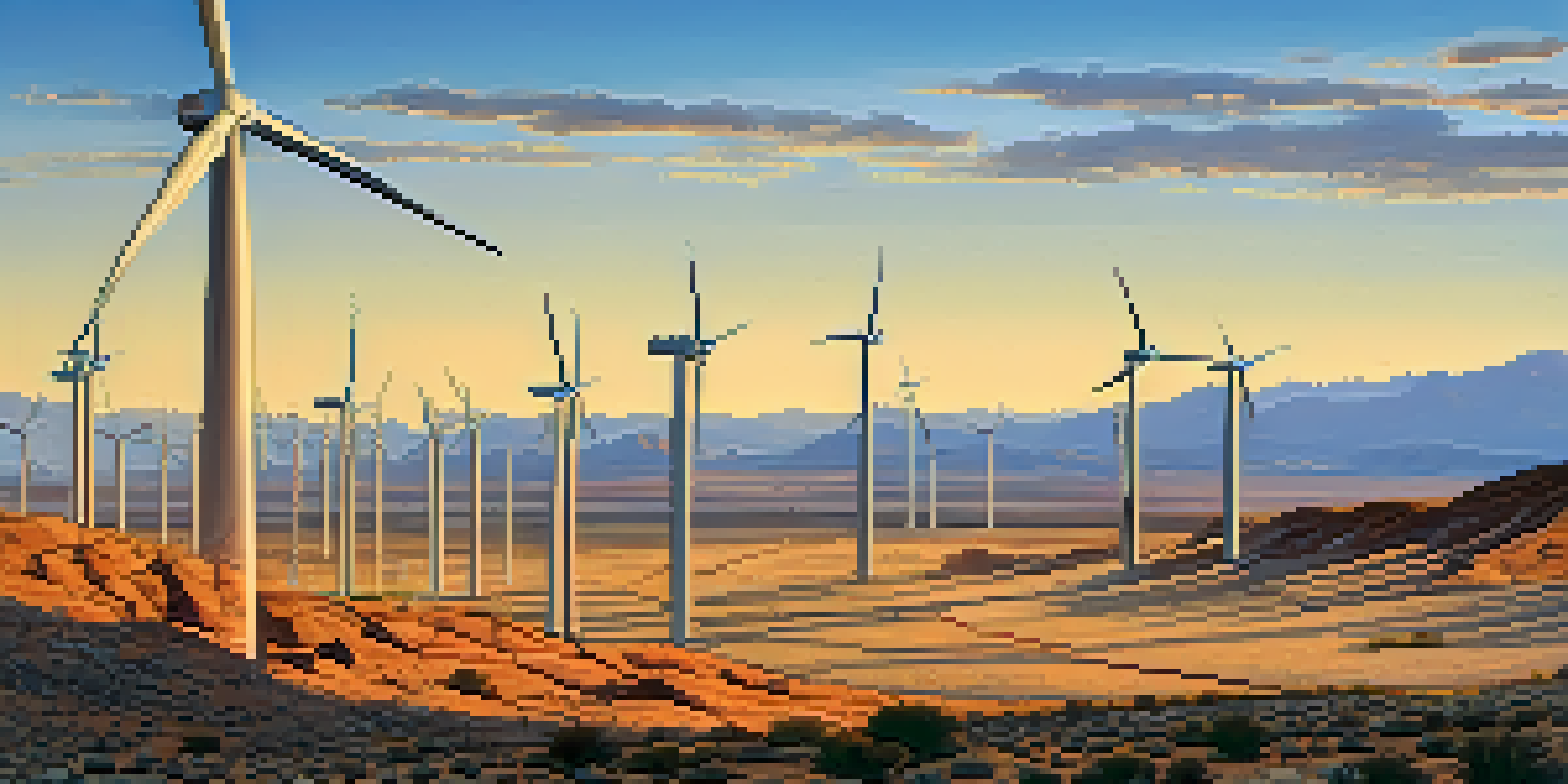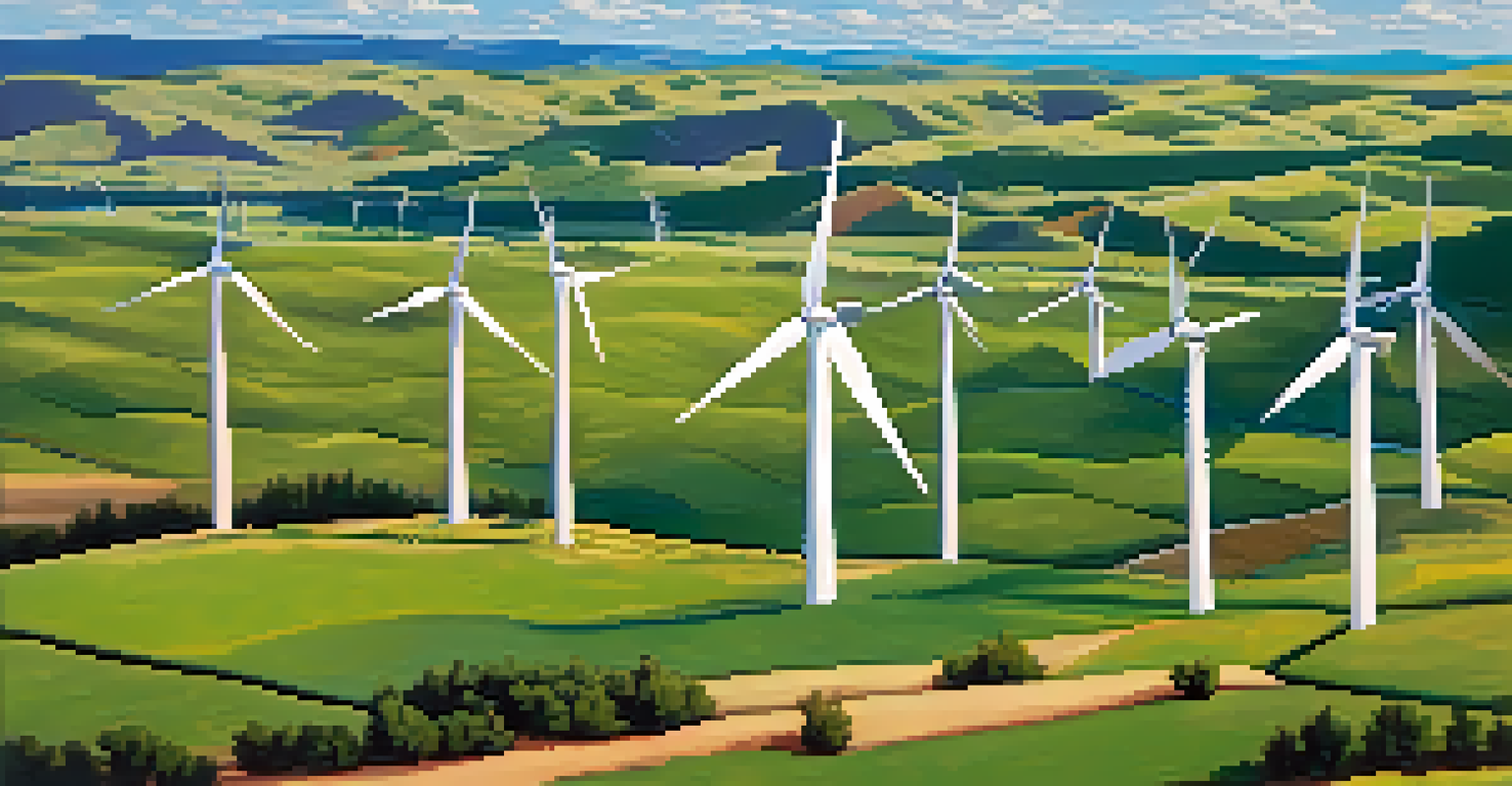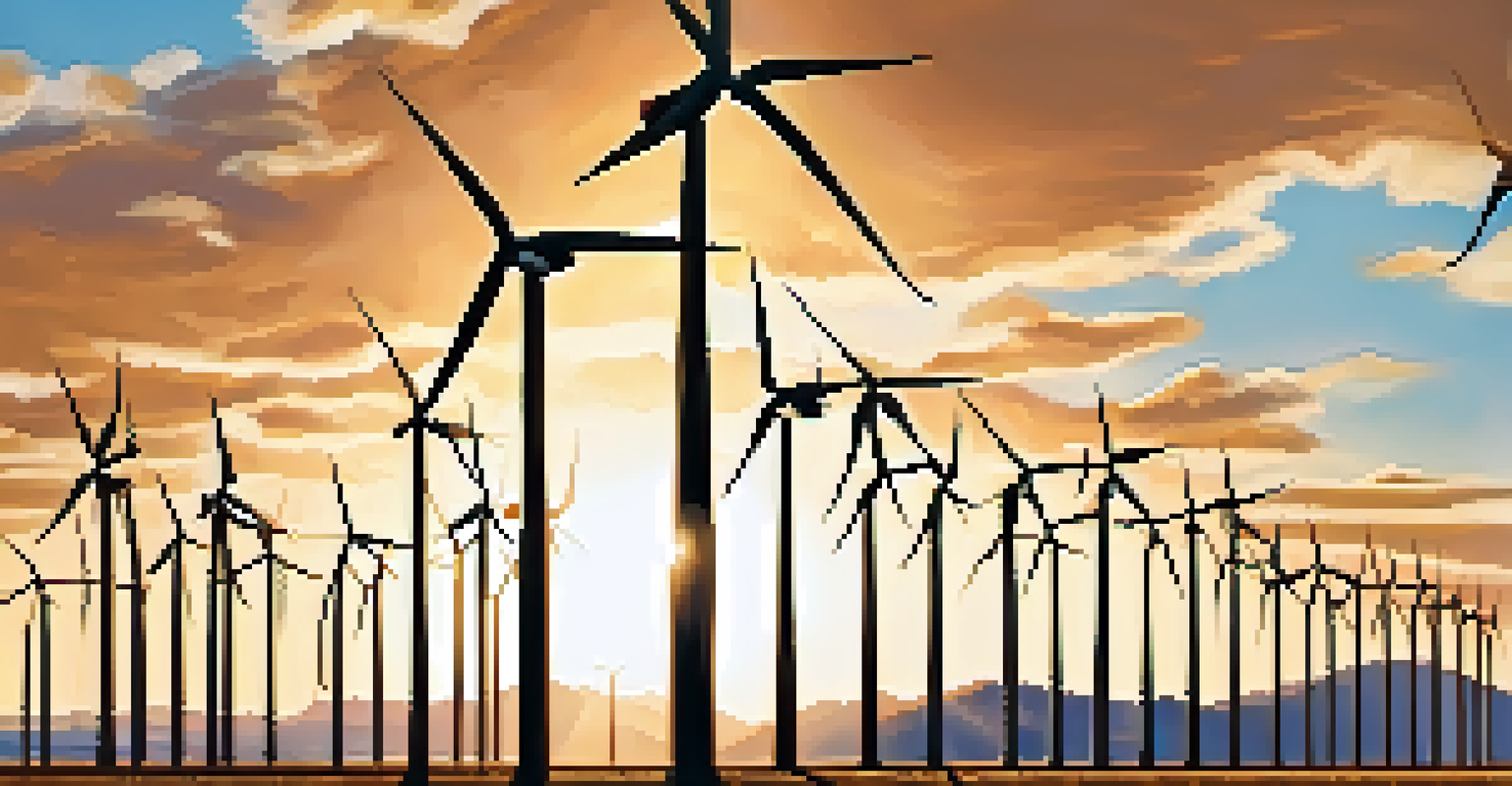Assessing Arizona's Wind Energy Resources for 2030 Goals

Understanding Arizona's Wind Energy Landscape
Arizona, often recognized for its sunny disposition, has considerable potential in wind energy as well. While solar energy grabs the spotlight, the state's diverse geography offers a range of wind resources that can contribute significantly to its energy portfolio. By understanding the existing wind patterns, we can better assess how they can be harnessed for sustainable energy production.
The future will be powered by renewable energy, and wind energy is a key component of that future.
In the northern part of the state, higher elevations and mountain ranges create ideal conditions for wind generation. These areas, combined with the natural desert landscapes, allow for the development of wind farms that can complement solar installations. Integrating both wind and solar energy is crucial for Arizona's future energy strategies, especially as demands for renewable energy grow.
As we look towards the 2030 goals, assessing the current landscape is pivotal. This involves evaluating existing wind facilities, understanding regulatory frameworks, and exploring potential sites for new wind projects. A comprehensive understanding of Arizona's wind resources lays the foundation for effective planning and development in the coming years.
Current Wind Energy Capacity in Arizona
Currently, Arizona has a modest wind energy capacity compared to its solar output. As of now, the state has made strides in adding wind farms, but its overall contribution to the energy mix remains limited. This presents both a challenge and an opportunity for stakeholders looking to expand renewable energy sources.

The existing wind farms are primarily located in areas with favorable wind conditions, such as the Black Mountain and the Mohave County regions. These projects have demonstrated that wind energy can be a viable part of Arizona's energy solution, but further investment and development are needed to reach ambitious 2030 targets. By increasing capacity, Arizona can enhance energy security and reduce reliance on fossil fuels.
Wind Energy's Growing Importance
As Arizona sets ambitious renewable energy goals for 2030, wind energy must be integrated into the energy mix to ensure stability and reliability.
Moving forward, it’s essential to conduct thorough assessments of these existing facilities. Identifying gaps in capacity and opportunities for upgrades can inform future investments, ensuring that Arizona capitalizes on its wind energy potential. By maximizing current resources, we can create a more resilient and environmentally friendly energy landscape.
Wind Energy's Role in Arizona's Renewable Strategy
As Arizona sets its sights on ambitious renewable energy goals for 2030, wind energy must play a central role in the strategy. Balancing the energy mix with both solar and wind resources helps to ensure a more stable and reliable supply. Wind energy can provide generation during times when solar is less effective, such as nighttime or cloudy conditions.
Harnessing wind energy is not just about sustainability; it's about ensuring energy security for generations to come.
Incorporating wind energy into the broader renewable strategy not only helps meet sustainability goals but also enhances grid resilience. By diversifying energy sources, Arizona can reduce the impact of fluctuations in any single energy type. This balanced approach can also help mitigate the effects of climate change while promoting economic growth through job creation in the renewable sector.
Moreover, collaboration among state agencies, utility companies, and stakeholders is vital to navigate regulatory challenges and streamline the development of wind projects. By working together, Arizona can create a cohesive strategy that maximizes the benefits of its wind resources, paving the way for a greener future.
Identifying Key Wind Energy Sites in Arizona
Identifying the right locations for wind energy development is crucial for optimizing Arizona's wind potential. Areas with higher wind speeds and consistent patterns, such as ridgelines and open plains, are prime candidates for wind farm installations. Conducting wind resource assessments is a necessary step to pinpoint these advantageous sites.
Additionally, proximity to existing infrastructure, such as power lines and roads, can significantly influence site selection. By focusing on areas that minimize the need for extensive new infrastructure, developers can lower costs and expedite project timelines. Furthermore, careful consideration of environmental impacts and community concerns is essential for gaining public support.
Key Sites for Wind Development
Identifying optimal locations with high wind speeds and existing infrastructure is crucial for maximizing Arizona's wind energy potential.
As we approach the 2030 goals, targeted site identification will be a game-changer for Arizona's wind energy ambitions. By leveraging data and technology, stakeholders can make informed decisions that maximize resource use while ensuring sustainable practices. This strategic approach will ultimately lead to a more robust wind energy sector.
Technology Advancements Supporting Wind Energy
Technology plays a pivotal role in enhancing the efficiency and viability of wind energy in Arizona. Innovations in turbine design, such as larger blades and advanced materials, allow for greater energy capture even in lower wind conditions. These advancements can significantly improve the performance of wind farms throughout the state.
Moreover, the integration of smart grid technology enables better management of energy distribution from wind resources. Real-time data analytics can optimize energy flow and integration with other renewable sources, ensuring a balanced energy supply. This technological synergy is essential for meeting the increasing energy demands of a growing population.
As we look towards 2030, investing in research and development will be crucial. By fostering partnerships with tech companies and universities, Arizona can stay at the forefront of wind energy innovation. Embracing modern technology will not only enhance energy production but also solidify Arizona's reputation as a leader in sustainable energy.
Regulatory Framework for Wind Energy Development
Navigating the regulatory landscape is a fundamental aspect of advancing wind energy projects in Arizona. Understanding local, state, and federal regulations is essential for developers looking to bring new wind farms online. A clear and supportive regulatory framework can facilitate project approvals and foster a favorable environment for investment.
Arizona has made efforts to streamline the permitting process for renewable energy projects, but challenges still exist. It’s important for stakeholders to engage with policymakers to advocate for policies that promote wind energy development. By fostering open communication, developers can help shape a regulatory environment that encourages growth while addressing environmental concerns.
Tech Advancements Boost Efficiency
Innovations in turbine design and smart grid technology are essential for enhancing the efficiency and viability of wind energy in Arizona.
As we approach 2030, a proactive approach to regulation will be critical. Simplifying permitting processes and providing incentives for renewable energy investments can drive progress in the wind sector. A cohesive regulatory strategy will ultimately contribute to Arizona's success in achieving its renewable energy goals.
Public Awareness and Community Engagement on Wind Energy
Building public awareness and community support for wind energy is vital for the success of future projects in Arizona. Engaging local communities through educational initiatives can help demystify wind energy and highlight its benefits, such as job creation and reduced carbon emissions. By fostering a positive perception, stakeholders can encourage public buy-in for new developments.
Community engagement can take many forms, including workshops, informational sessions, and open forums. These platforms allow residents to express concerns, ask questions, and become active participants in the planning process. Addressing community feedback and incorporating suggestions can lead to more successful project outcomes and stronger local support.

As we move towards the 2030 goals, strengthening public awareness is more important than ever. By cultivating informed communities, Arizona can create a collaborative environment where renewable energy projects thrive. Ultimately, this collective effort will contribute to a sustainable energy future for all Arizonians.